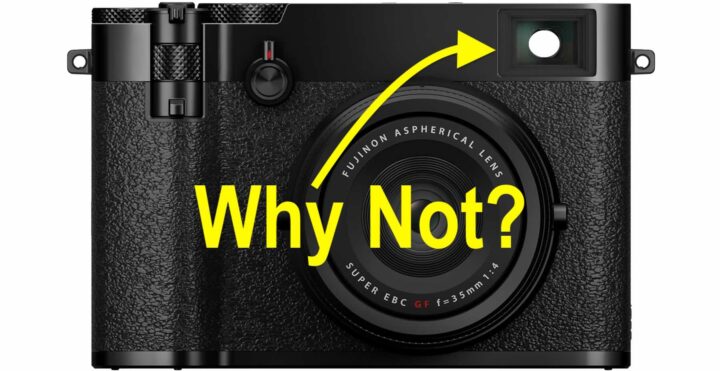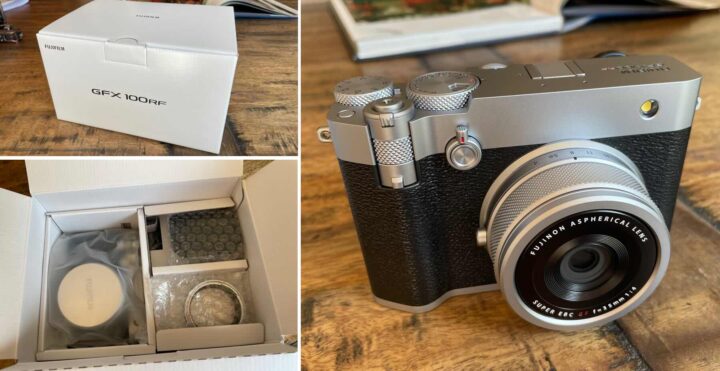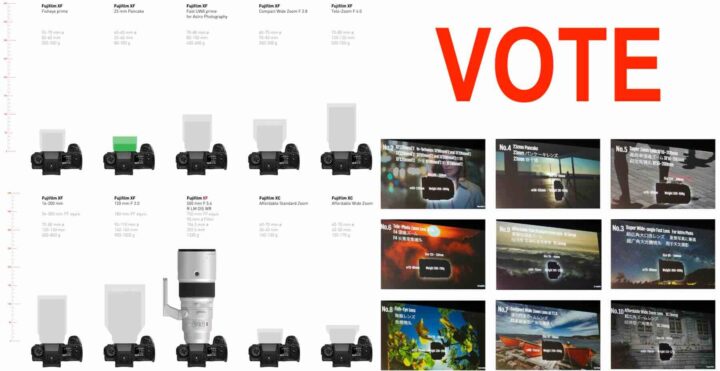Fujifilm Managers Explain GFX100RF Lack of Hybrid Viewfinder, WCL and TCL for GFX100RF, Content Credentials and More

Fujifilm managers talked to DPReview. You can read a summary below and the full interview here.
- GFX100RF is for street and documentary photography because it is so small and lightweight
- when they started to design the GFX100RF, they knew the price point already
- to match that price point it had to be more luxurious than the X100Vi for example
- so the main plate is milled out of a single block of aluminum, which is top end of manufacturing
- it allows for more unique design and complex shapes
- it takes about 5 hours to turn the aluminum block into the top plate
- Redesigned lens hood with a new adapter ring that only fits one way
- Rectangular hood attaches easily and aligns perfectly every time
- rear element of lens is very close to the sensor
- Fujifilm considered several lenses, but 28mm was best for compactness and image quality
- allows for handheld shooting with low shutter speeds
- Fujifilm is currently not thinking at add-on optical lenses like for X100VI
- depends on customer feedback if wide and teleconverter will be launched
- aspect ratio dial is a connection between digital and film cameras
- Fujifilm tries to reach new customers with GFX100RF, and this concept is aimed to that
- Fujifilm also wanted to offer a tool to change aspect ratio in camera rather than in post
- a dial was the easiest way to implement aspect ratio control
- Hybrid Viewfinder?
- “The hybrid viewfinder’s structure is a little bit complicated, which means the magnification would be much smaller for such a high-resolution camera“
- “Another reason is the digital teleconverter. If it comes with an OVF, we’d have to cover 20mm of range when using the teleconverter, which would make the guide-lines much smaller. So, from a practical point of view, we decided to install the EVF“
- Content Credentials Support
- Fujifilm is still developing and investigating how to implement the CAI and the C2PA
- it’s unclear if GFX100RF will get this support. Fujifilm says: “If we have to pay to implement it, or if users have to pay… not so many will want it. Then it’ll only be for professional agencies or something“
- the industry has to come up with a standard
Get Yours
- Fujifilm GFX100RF
USA: BHphoto / AmazonUS (silver – black) / Adorama / Moment / Nuzira / BestBuy
CAN: AmazonCA - Fujifilm GFX100RF in EU/UK
UK: WexPhotoVideoUK / AmazonUK / ParkCameraUK
GER: AmazonDE / CalumetDE / FotoErhardt / Fotokoch
EUR: 50.8 Shop / PCHstore / AmazonFR / AmazonIT / AmazonES / AmazonNL
Worldwide: Amazon of Your Country






